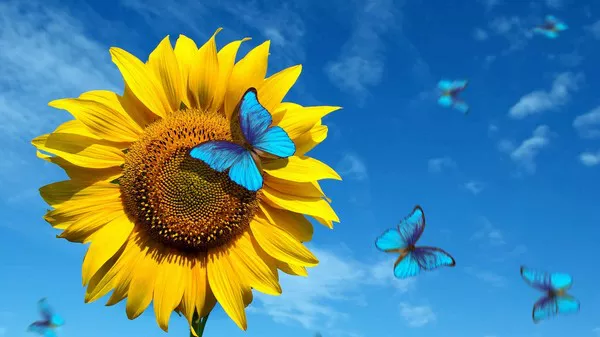Bees and wasps play a crucial role in pollination, but their presence can sometimes be unwelcome in certain settings. For individuals with allergies or a fear of stings, it’s essential to create a garden that minimizes the attraction of these buzzing insects. While it is practically impossible to completely exclude bees and wasps from your outdoor space, selecting specific flowers that are less likely to attract them can help create a more comfortable environment. In this article, we will explore the topic of flowers that do not attract bees and wasps and provide some tips for designing a garden that balances aesthetic appeal with insect mitigation.
1. Understanding Bees and Wasps
Bees and wasps are two distinct groups of insects, but both play important roles in pollination. Bees are generally less aggressive and more focused on collecting nectar and pollen from flowers. They are crucial for the fertilization of plants and the production of honey. Wasps, on the other hand, have a more predatory nature and can become more aggressive, especially when defending their nests or food sources. While both bees and wasps are beneficial for ecosystems, they can pose a threat to individuals who are allergic to their stings.
2. Choosing Flowers Wisely
When planning a garden that aims to minimize bee and wasp activity, selecting the right flowers is key. Certain flower characteristics, such as color, scent, and shape, can influence the level of attractiveness to these insects. While no flower can guarantee zero bee or wasp visits, some flowers are less likely to draw their attention. Here are a few flower types that tend to be less attractive to bees and wasps:
Ferns and Foliage Plants
Ferns and foliage plants, such as hostas and fern leaf bleeding hearts, are excellent choices for gardens with minimal bee and wasp attraction. These plants do not produce showy flowers and instead offer lush greenery that adds texture and visual interest to the landscape. By incorporating ferns and foliage plants, you can create a bee- and wasp-friendly environment without compromising on aesthetics.
Herbs
Many culinary herbs, including thyme, sage, and rosemary, have flowers that are less attractive to bees and wasps. These plants tend to have smaller, less conspicuous flowers, and their strong aromatic scents often mask the floral scent that attracts insects. Growing a herb garden not only provides you with fresh ingredients but can also help deter bees and wasps from frequenting your outdoor space.
Bulbous Plants
Bulbous plants like daffodils, tulips, and hyacinths are known for their vibrant blooms. While they can attract some bees during the early spring when little else is in bloom, their trumpet-shaped flowers are less appealing to wasps. By incorporating these bulbous plants into your garden design, you can enjoy a burst of color while minimizing the risk of attracting stinging insects.
Ornamental Grasses
Ornamental grasses, such as maiden grass and switchgrass, are popular choices for low-maintenance landscapes. These plants produce inconspicuous flowers and provide a soft, feathery texture to your garden. Their wind-pollinated flowers are less likely to attract bees and wasps, making them a suitable addition for those seeking to create a more bee- and wasp-free environment.
3. Creating a Bee- and Wasp-Friendly Garden
While selecting specific flowers can help reduce bee and wasp activity in your garden, it’s essential to remember that these insects are still vital for pollination and the overall health of ecosystems. Rather than trying to eliminate them entirely, it’s better to focus on creating a balanced and bee- and wasp-friendly garden. Here are a few tips to achieve this:
4. Diverse Plant Selection
Opt for a diverse range of plant species in your garden. By incorporating various types of flowers, you can attract a broader spectrum of pollinators and disperse their activity across a wider area, reducing the concentration around specific plants.
5. Avoid Monocultures
Monocultures, where a single plant species dominates an area, can attract an overwhelming number of bees and wasps. By mixing different plants, you create a more complex environment that encourages biodiversity and discourages concentrated insect activity.
6. Plant Bee-Friendly Flowers in a Different Area
If you want to enjoy the beauty of bee-attractive flowers but also want to reduce bee and wasp visits near your patio or seating area, consider planting these flowers in a separate area of your garden. This allows you to appreciate their beauty while minimizing potential encounters with stinging insects.
Conclusion
Designing a garden that minimizes bee and wasp activity is a practical approach for individuals who are allergic or fearful of these insects. While it’s impossible to eliminate bees and wasps entirely, careful flower selection and thoughtful garden design can help create a more comfortable outdoor space. Remember, it’s essential to strike a balance that supports pollinators while also ensuring personal safety and enjoyment of your garden oasis.


